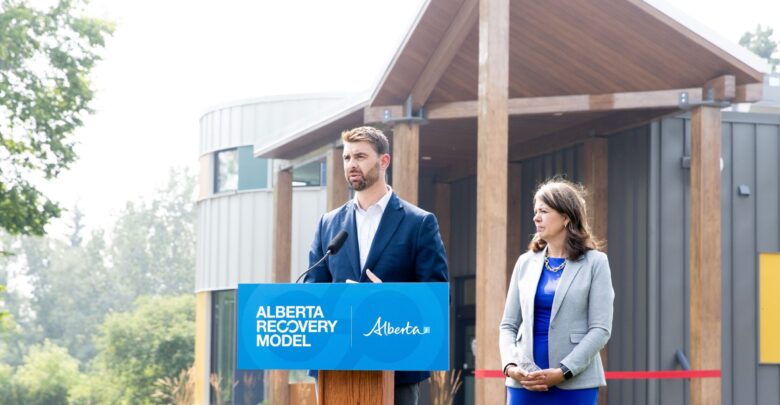Alberta’s recovery model needs to prioritize harm reduction
If other solutions are ignored in favour of involuntary treatment, addiction recovery province-wide will suffer.
 Supplied
SuppliedRecently, the province opened a new addiction recovery centre west of Edmonton. While the Lakeview Recovery Community may be beneficial for addicts seeking care, it is overshadowed by looming legislation from the provincial government. Dan Williams, minister of mental health and addiction, plans to propose “compassionate intervention” legislation with the support of Premier Danielle Smith in 2025 as a way to help tackle addiction. This legislation would allow Albertans to legally force their family members into addiction recovery centres without the individual’s consent. If this legislation passes next year, it will inevitably harm those forced into treatment.
Studies have shown time and time again that this type of involuntary treatment is ineffective. Yet, Alberta keeps missing the memo. If the provincial government wants to keep people living with a substance use disorder off the streets, it needs a multi-faceted approach. Rather than losing their autonomy in involuntary care, people living with a substance use disorder can take control with a combination of housing, harm reduction, and voluntary recovery.
There’s no denying that Canada’s opioid crisis got worse after the COVID-19 pandemic. Drug overdoses increased by 30 per cent between 2020 and 2021. The use of cocaine also keeps growing, with fentanyl continuously making it more dangerous. The latest report shows opioid-related deaths are starting to decrease, but we are still seeing far too many deaths.
On the surface, involuntary treatment might seem like the right solution. If people living with a substance use disorder won’t willingly stop, why not force them to? However, this approach mistakenly assumes that they just need their foot in the door of recovery centres. In actuality, there are more barriers to recovery than the desire to get better. For instance, a study from the University of Waterloo showed that low-income Canadians are almost four times more likely to die from opioids. Wasem Alsabbagh, the study’s lead author, explained that “poorer access to resources” and “feeling marginalized” can have an effect. These issues don’t go away with forced care.
Euan Thomson, a harm reduction advocate, reiterates this argument as well. According to Thomson, Smith’s plan would force people struggling with addictions “into treatment when what they often need is housing and basic needs met.” Rather than focusing on the symptoms alone, Alberta also needs to address the root cause — the housing crisis and inflation.
Of course, tackling these economic issues is only possible in the long-term. In the meantime, harm reduction can effectively reduce overdoses and improve the health of people who use substances. This approach involves supervised drug consumption, checking drugs for contaminants, and employment initiatives. It preserves a road to recovery by keeping people alive in the meantime.
Relapses happen, even after patients receive treatment. In fact, involuntary care has a high relapse rate. But the time spent in recovery breaks down a patient’s tolerance to drugs, so these individuals are much more likely to overdose. Instead of forcing people into treatment — which could be unsuccessful at best — the Alberta government should focus on harm reduction and improving quality of life.
Don’t get me wrong. There doesn’t have to be a choice between harm reduction and recovery. The Lakeview Recovery Community’s free voluntary treatment still helps people and gives access to addiction resources. But we can’t keep pretending that involuntary treatment would do the same.
Rather, involuntary centres can quickly become places of abuse and deprivation. The Canadian Civil Liberties Association (CCLA) has even called this treatment unconstitutional and unlawful. But when we chase a cure-all for addiction this is where we end up. The Alberta government will end up wasting resources on solutions that don’t work and are potentially dangerous. Instead, it needs to prioritize a range of economic initiatives, harm reductive approaches, and voluntary treatment centres. Otherwise, the new addiction centres may do as much harm as good.




